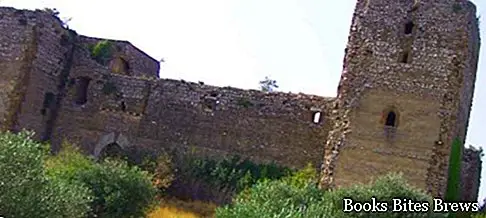What to see in San Felice a Cancello, an itinerary including the main monuments and places of interest of this micro Campania town in the province of Caserta.
Tourist information
For this particular position, just fifteen kilometers from Naples, from San Felice to Cancello you can reach all the main towns in the region within a radius of about 50 km and this also favors the rail freight traffic concentrated in the nearby hamlet of Cancello Scalo as a strategic logistic position on the Naples-Cancello Capua and Naples-Cancello-Benevento trajectory.
Geographically it is located in the southern part of the Suessola Valley and is part of the Partenio Regional Park characterized by Mount Sant'Angelo in Palombara. Nearby hamlets such as Casazenca, Piedarienzo, Cave and Vigliotti, have been joined to San Felice a Cancello forming the inhabited center of the municipality.
If you continue on the road to Monte Sant’Angelo in Palombara you will come across Talanico while going west on the main road 162 you will find Ponti Rossi, Botteghino and Cancello Scalo. In the middle of the Suessola Valley are San Marco, Trotti and Grotticella while Polvica is located much further south on the other side of Monte Sant'Angelo near Nola.
The economy of the area is mainly based on agriculture, small artisan activities specialized above all in the production of baskets and retail trade.
As for the climate of San Felice a Cancello it is decidedly mild and characterized by a frequent wind due to the difference in temperature of the air masses located between the upper Caudina valley and the lower Suessola valley which are communicating through the gorge of the Forks Caudine.
In the area, remnants of remote architecture belonging to a temple built in the Samnite era have been found, and there is reason to believe that the military base of the consul Marco Claudio Marcello was also located nearby during the second Punic war.
Other settlements in recent times date back to the tenth century after Christ when the first inhabited center was born around a chapel dedicated to San Felice. For some centuries the people of the area were administered by the fief of Arienzo until independence at the end of the 1700s.
What see
On the hill stands the Norman castle built around the year 839 by the Lombard Rudovaco who donated it before dying to the count of Acerra.
Legend has it that the Count, in completing an underground passage that would put the castle in communication with that of his fiefdom, caused the collapse of a large part of the building which he did not have time to rebuild before the use of death in battle .
The castle was later rebuilt by the Norman Ramperto.
Recommended readings- Sapri (Campania): what to see
- Campania: Sunday day trips
- Amalfi (Campania): what to see
- Acciaroli (Campania): what to see
- Teano (Campania): what to see
According to tradition, the count, in an attempt to join the building, through an underground tunnel, to the castle of his fiefdom, caused the collapse of an entire wing of the building.
He did not have time to remedy the damage because he found death in the battle of Sclavi, where he fought alongside Landone di Capua.
The Norman Ramperto rebuilt the castle, who quickly changed his mind and destroyed it again. It was the Mattaloni counts who rebuilt it giving it its current appearance, except for small changes made by subsequent owners over the centuries.




